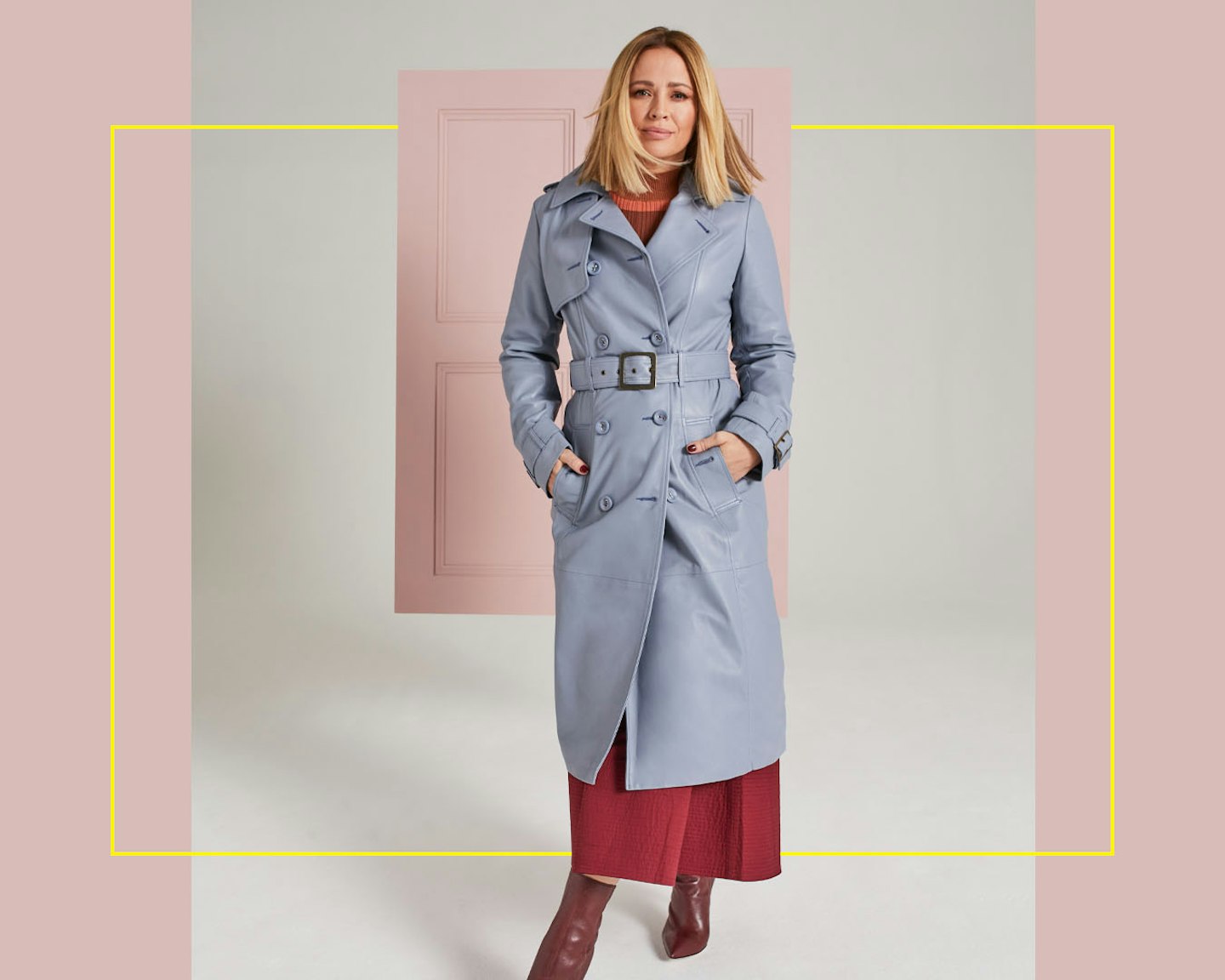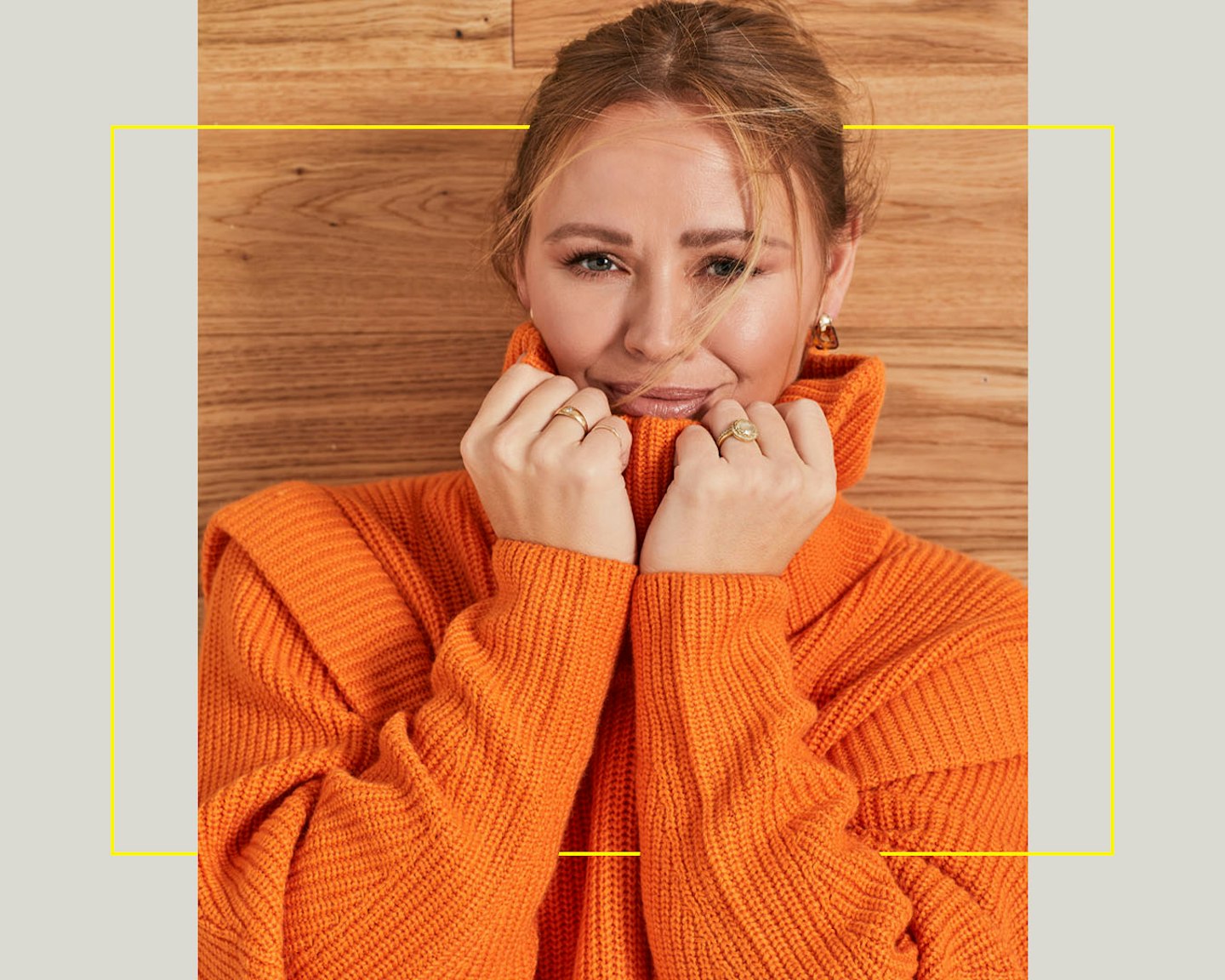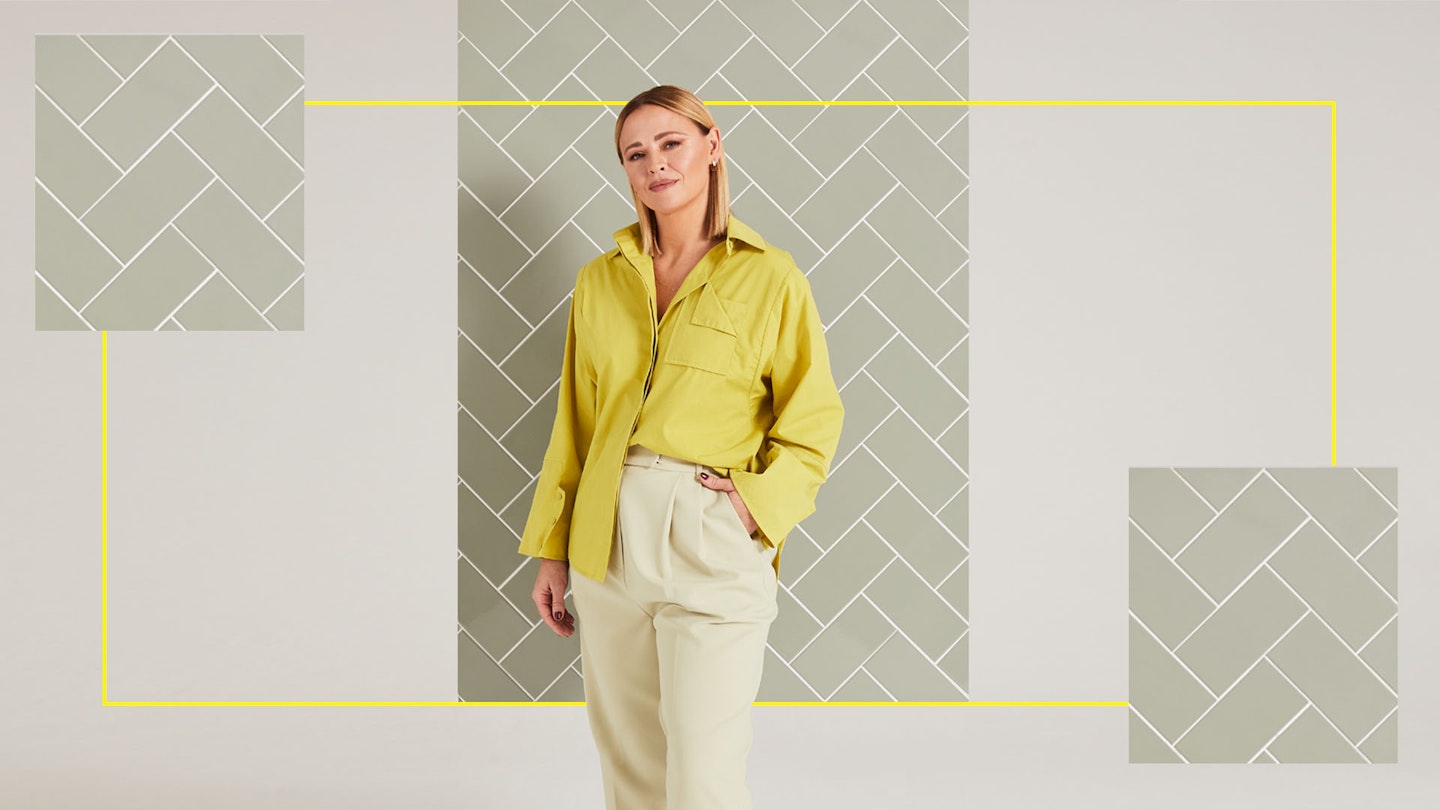Want to give your room an update but don't have the time or the cash to go big? The good news is that you can still make a room look and feel different by switching up just one section of it. Here's how...
Tile the floor of a small space
Tiling small rooms such as a bathroom or a downstairs loo with a patterned tile gives what is often a boring space bags of personality. Presenter and singer Kimberley Walsh opted for a patterned tile for her downstairs loo floor. 'It was a quick makeover that didn't cause much upset to the room but completely transformed it from plain to one with real character,' she says. Check out Wickes' range ofpatterned tiles from the traditional Melia selection to the Hoxton with its encaustic-style pattern in a soft French blue and the chic black and white Carnaby tile.
Tile your kitchen splashback
Give your kitchen a refresh simply by changing the tiles of your kitchen splashback. Choose a pattern or be creative with plain tiles. Wickes Farmhouse tiles have a lovely rustic, hand-made finish for a textured look; opt for just one colour such as the soft green Wickes Farmhouse Willow or alternate two or three complementary shades. Another option is to take the modern Metro tile and do something different with it such as arranging it in a herringbone pattern which looks super-stylish and contemporary.

Tile a fireplace surround
Another great idea for a quick tile makeover is tiling your fireplace surround. It instantly adds colour and interest to a room and you can use tiles in a number of different ways. Choose a highly patterned tile such as Wickes Central Park and turn your fireplace into an eye-catching focal point; you can even go one step further and tile the hearth in a complementary tile (with the Central Park tile, the Wickes Farmhouse Duck Egg blue tilewould work nicely). A plain neutral tile is perfect for a pared back minimalist feel while a coloured one will give a shot of boldness. Apply them in a herringbone arrangement and you add subtle pattern too.
Switch up the hallway floor
The entrance hallway is the first space you and your guests see and although it's often not a large space, a stylish floor punches way above it size, giving the space a chic look that sets the tone for the rest of your home. Kimberley used a patterned tile in her hallway. 'I opted for a black and white tile and it's created a really interesting-looking hallway plus it's practical too,' she says. Patterned tiles add visual interest, and can also add a splash of colour.
For an understated yet warm mood you can't beat wood, either natural or engineered. Wickes engineered oak wood flooring comes in a range of tones from a lovely light oak to a darker shade. Make a real statement with the herringbone pattern of Wickes Woodpeker Chateau Oak Herringbone parquet,
Panelling a wall
Panelled walls are the on-trend way to make a plain wall look interesting, adding texture for a room that feels warmer and more comfortable. 'It's an updated a version of a feature wall of wallpaper, creating a focal point,' says Kimberley. 'I particularly love the look in a bedroom.'
With Wickes wall panelling you can easily create a panelling wall – by inspired by the Wickes customer gallery which showcases a variety of great ideas. One of our favourites is to arrange flat mouldings in a regular square or rectangularpattern over the bottom section of a wall, and then paint. Opt for rich colours such as WickesEstate Green or Crown's Winter Cherry for a cosy yet sophisticated feel.
Paint the ceiling
Now called the fifth wall, painting the ceiling has become a cool way to add colour to a room. Choose a darker shade such as Wickes Driftwood to make a room feel cosier or go for a pale pastel shade such as Wickes Sky to brighten a space and add soft colour. Bring the colour down onto cornicing or, with a plain vertical wall, down about 30cm - 50cm for an elegant look.

DIY TIPS
++ Tiles are sold in packs with batch numbers - choose the same batch number so the colour is exactly the same. To decide how many tiles you need, calculate your surface area in m2 (length x width) and then check this against the coverage given for the pack. For irregular shaped rooms, divide the surface area into segments, measure each and then add the individual totals together for a grand total. Don’t forget to add at least 10 percent for inevitable wastage and offcuts.
The type of adhesive you need depends on the type of wall and the combined weight of the tiles and adhesive, as different walls can safely support different weights. Check the manufacturer's instructions – the Wickes tiling guide is also super-helpful.
++ With paint, again buy the amount you need in one go to ensure it’s all from the same batch and therefore, the exact same shade. To calculate how much paint you’ll need, measure ceilings and walls to get the total surface area and allow for two coats of paint.
++ Before you start tiling and painting, take the time to do the prep. Yep, it can be boring but it's important if your end result is going to look professional. This means priming the surface so with tiles, your tile adhesive doesn't lose moisture as this will cause your tiles to start to loosen; with paint, it means the wall absorbs the paint well. Also make sure the surface is clean and free of dust, grease and flaky plaster.
For lots more advice, DIY how-to guides and inspiration, head to wickes.co.uk.

